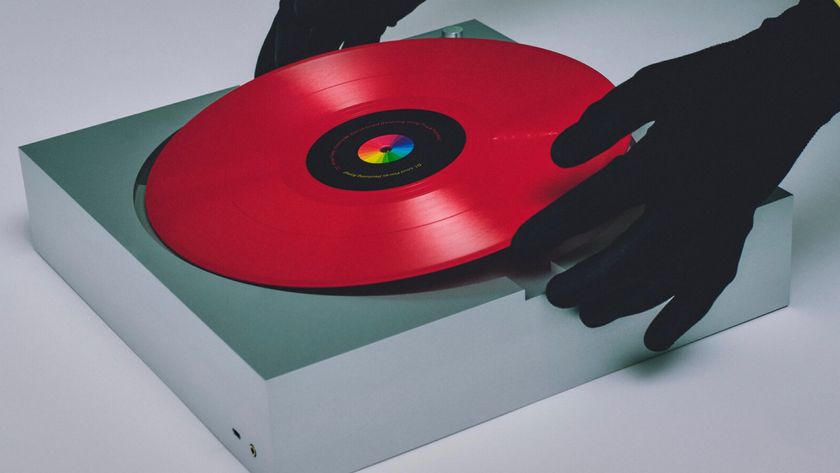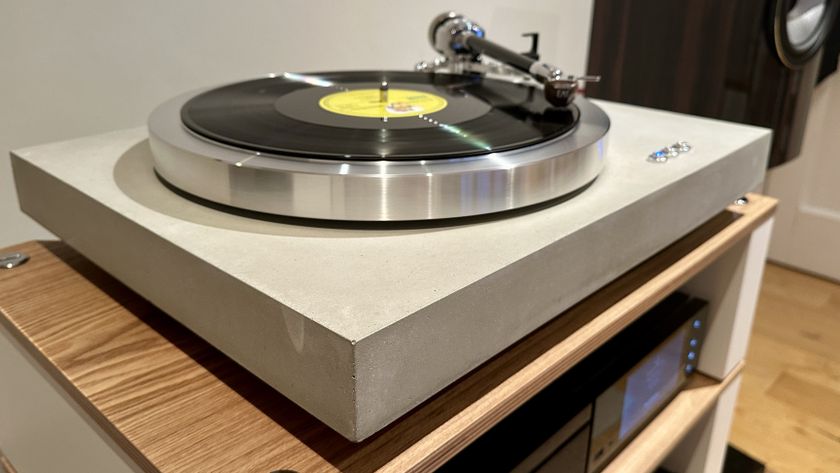The history of the turntable: how vinyl survived the CD, iPod, and Spotify
The record player has lasted against all the odds
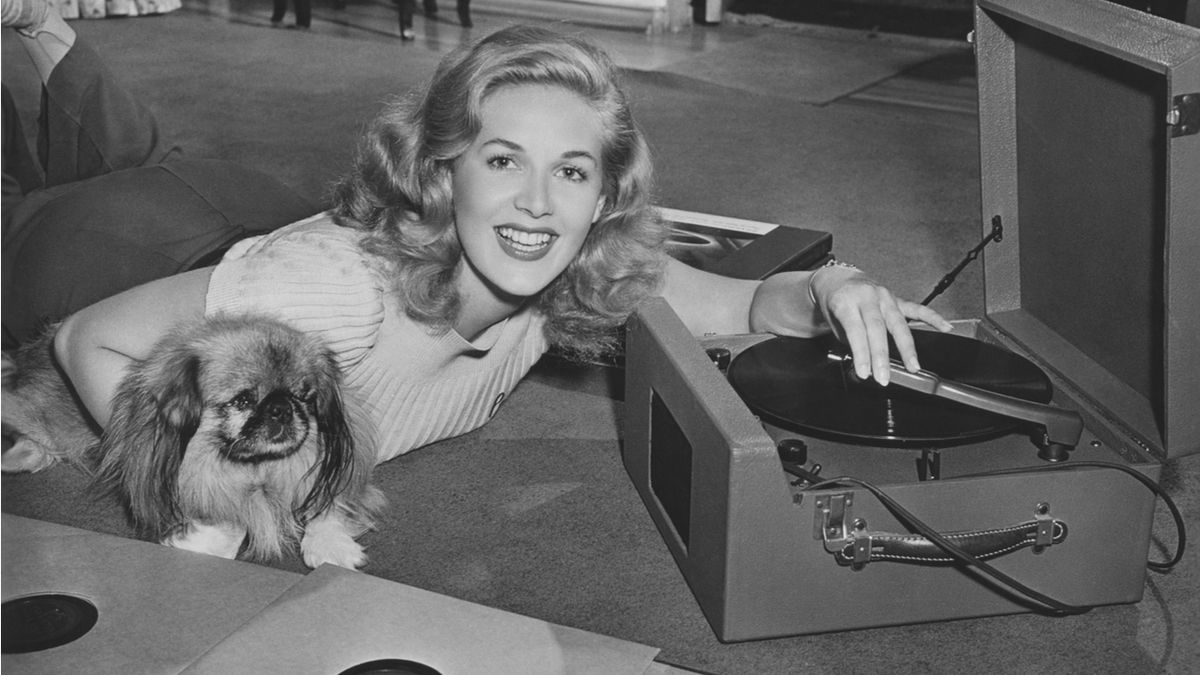
The turntables of today are undoubtedly very different beasts from the rickety old record players that may be collecting dust in your parents’ attic, boasting innovations such as Bluetooth connectivity and USB ports that allow you to convert your favorite records to MP3.
That being said, the basic components that make up a record player haven’t really changed since Thomas Edison invented the phonograph in 1877.
The phonograph was the earliest machine capable of reproducing and recording sound, and in some form or another, the turntable along with vinyl records has endured where other, more recent formats – such as cassette tape and CD – have fallen out of favor.
That’s not to say that the turntable has had an easy ride; the advent of tape and CD, and later, the introduction of the iPod and digital downloads, meant that record player sales fell into sharp decline from the early 1980s.
Conceived in 2007, Record Store Day is a yearly celebration of independent record stores. Special vinyl releases are made exclusively for the day and released in what are known as ‘Record Store Day Drops’.
Usually, the festivities include in-store performances, meet-and-greets, and parties, but the coronavirus pandemic has stifled those plans somewhat; instead, this year’s celebration is split over three days, with stores adhering to the social distancing guidelines in their region.
Don't miss our Record Store Day deals page, where we'll have all the latest discounts on turntables, headphones, speakers, and more.
For a while, it looked as though the most popular method of music listening and recording of the 20th century would be condemned to the technological dumping ground, along with the transistor radio and the wind-up telephone.
The final death knell for vinyl would surely come once music streaming behemoths such as Spotify and Apple Music delivered a means by which we could access music from a multitude of devices at any time? But it didn’t happen.
In fact, it’s been quite the opposite. Since the early 2000s, vinyl has been enjoying something of a renaissance, with record sales in the US growing at a steady pace for 14 consecutive years. This has ensured the enduring popularity of the humble turntable even in the age of music streaming.
Get daily insight, inspiration and deals in your inbox
Sign up for breaking news, reviews, opinion, top tech deals, and more.
Campaigns such as Record Store Day, alongside the insistence of diehard audiophiles that vinyl sounds superior to other formats, are partly responsible for this uptick. However, the demand for records is something of a marvel when we can so easily access music digitally, not to mention the latter is certainly cheaper, easier and more convenient.
Given the huge technological leaps made in the 20th and 21st centuries, just how did the turntable manage to survive and thrive, where other audio devices and formats failed?
The invention of the phonograph
The origins of the turntable we see today lay in Thomas Edison’s phonograph, an audio recording and playback device the US inventor created in 1877.
Featuring a sheet of foil wrapped around a wooden cylinder, an attached handle allowed Edison to rotate it. Pressed to the foil sheet was a needle with a horn attached.
Edison found that when he spoke into the horn, the vibrations from his voice moved the needle up and down, creating an imprint or groove on the foil.
Depending on how loudly or softly he spoke, the depth of the groove became deeper or shallower; this groove represented a recording of his voice.
Crucially, Edison could play back the recording by placing the needle at the start of the groove and turning the handle. This caused the needle to trace the pattern of his voice; as the needle vibrated, the sound waves it generated were amplified by the horn.
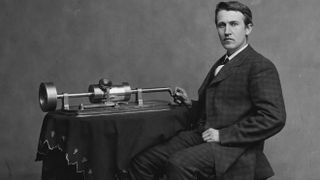
The current day record player doesn’t blast your music via a giant horn, but it follows a similar principle.
Instead of a needle, today’s record players feature an intricately made stylus at the end of a tonearm. This is usually made from a minuscule piece of diamond attached to a flexible metal strip, although materials such as ruby, sapphire, boron, and even cotton fibre can also be used.
Vinyl records, too, haven’t changed much in principle, featuring micro-grooves that are traced by the stylus to reproduce the sound of the original recording.
As the platter of the turntable spins the record, vibrations travel through the stylus and into the cartridge, where coils in a magnetic field convert the kinetic energy from these vibrations into an electrical signal. Nowadays, these signals are amplified by a preamp or phonostage, which in turn, powers your speakers.
Sure, the audio quality delivered by today’s turntables is far cleaner, crisper and more accurate than the raspy recordings of Edison’s day – but, fundamentally, the turntable works in much the same way it did more than 140 years ago.
The golden age of vinyl
Edison’s phonograph was a hit – although the turntable didn’t become a fixture in the average home until the 1960s.
According to Steve O’Hagan, director of When Albums Ruled the World, from around the mid-60s to the late 70s, the vinyl album turned music into America’s “most popular entertainment industry, ahead of Hollywood and sports”. It paved the way for a new age in popular music: the album era.
It was during this time that the Beatles gave us Sgt. Pepper’s Lonely Hearts Club Band and the White Album, Pink Floyd unleashed The Dark Side of the Moon, and Joni Mitchell released one of the most important albums of the 1970s, Ladies of the Canyon.
The concept album lent itself particularly well to the virtuosic psychedelic rock that flourished in the 1970s. It was a far cry from the single pop hits that had dominated radio airwaves in the 1950s and early 1960s.

As musical journalist Greg Kot put it in a 1999 article for the Chicago Tribune, album “listeners [were] no longer twisting the night away to an assortment of three-minute singles, but losing themselves in a succession of 20-minute album sides, taking a journey led by the artist”.
Aside from your new turntable, there are some other bits of kit you might want to invest in.
First off, you'll want to check out the best stereo speakers; after all, a turntable is only as good as your speakers you hook it up to.
If you opt for a fancy wireless turntable, you might want to invest in a Bluetooth speaker, connect it to your existing smart speaker, or buy a pair of fantastic wireless headphones.
If your record player of choice doesn't have a built-in amplifier, you'll need to buy one – check out our amplifier reviews for more information.
Plus, don't miss our guide on how to set up a turntable.
An entire culture sprung up around the turntable, led by teenagers desperate to escape from the humdrum of family life.
According to James Campion in his 2005 book, Shout It Out Loud: The Story of Kiss's Destroyer and the Making of an American Icon: "Many of them were unable to control the family television or even the kitchen radio. This led to prioritizing of the bedroom or upstairs den: the imagination capsule, locked away inside the headphone dreamscape, studying every corner of the 12-inch artwork and delving deeper into lyrical subtext, whether in ways intended by the artist or not.”
“As if sitting in their own theater of the mind – already hijacked by comic-book fantasy images of horror and science fiction, advertising propaganda, and the American promise of grandeur – they were willing participants in the playful meandering of their rock-and-roll heroes,” he continues.
While the album as a coherent work of art remained a mainstay of popular music until well into the 2000s, the golden age of vinyl wouldn’t last so long. Newer, simpler-to-use formats were on the horizon to take its place, and the hit single was about to make its comeback.
MTV and the return of the single
In 1981, we saw the beginning of 24-hour music television in the form of music channel MTV, with music videos becoming a crucial part of pop culture.
As Jon Pareles put it in a 1991 New York Times article, “disposable hits” eclipsed the album rock era of the 1970s. Although albums remained the dominant format for delivering music, vinyl sales continued to decline with the emergence of the cassette, and later the CD.
Cassettes, in particular, brought an easier way for people to consume and manipulate music – their low cost gave rise to bedroom hip-hop artists sampling and remixing music.
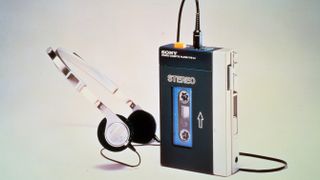
Their durability and portability encouraged underground music – which, according to Robin James in his 1992 book, Cassette Mythos, created “a foothold for Western culture among the younger generations”. In addition, the introduction of the Sony Walkman in 1979 meant you could listen to your music on the move without the need to lug around a huge boombox.
The CD launched in 1984, introducing yet another cheap and portable way to listen to music. Vinyl fell out of favor even further, coveted only by “crate diggers” at car boot sales and independent record stores.
Vinyl in the age of music downloads and Spotify
Once file-sharing sites such as Napster introduced music downloads to the world, vinyl seemed consigned to the history books as a dead format, with the launch of Apple’s iTunes in 2001seemingly cementing its fate.
iTunes and the iPod, which was launched later that year, brought the most easily portable way of listening to music the world had ever seen, allowing users to carry thousands of songs in their pocket. Plus, as smartphones became more advanced through that decade, the iPod became the music player of choice for the majority of consumers.

Digital music downloading soon gave way to music streaming, with the introduction of Spotify in 2006 giving people access to a huge library of both popular and underground music for free (although most music streaming services offer a ‘freemium’ model, whereby you can pay for extra features).
With such streaming services curating playlists, the emphasis once more shifted to the single as opposed to the album, with people choosing to consume music as single tracks as opposed to full albums.
“The fate of the album, for the most part, is now at the mercy of streaming algorithms. Streaming encourages omnivorous listening rather than feasting on one thing,” wrote Eamon Forde in an article for Louder.
The vinyl revival
The popularity of digital music should have killed off vinyl once and for all – but it didn’t. Since 2006, record sales have been rising steadily, and while they still make up a marginal percentage of music revenue, there can be no doubt that we’re the midst of a vinyl revival.
There are numerous reasons for this. Record Store Day, which launched in 2007 in the UK but is now a global event, celebrates vinyl culture and promotes the independent record store; it’s become a hugely important date in the music calendar.
Another reason that vinyl could be seeing a resurgence is a feeling of nostalgia for the tangibility of physical records; that feeling of owning your own music collection was largely erased when the industry went digital. Sure, you can buy albums and singles online, but you can’t display them with pride or leaf through well-worn sleeve notes to interrogate the lyrics of your favorite song one more time. There’s a distinct joy in visiting your local record shop, too, spending an afternoon thumbing through the racks in the hope of finding a rare gem.

There’s also the small matter of how vinyl sounds. The warm analogue sound of a record spinning on a turntable brings a different flavor to music, with pops and crackles adding a charm that those of us who were brought up in the digital age find enchanting.
If there was life in the record, then why not for some of the other formats we’ve seen fall by the wayside? Well, cassette covers can’t compete with the space offered by a record sleeve to showcase striking artwork. As such, they don’t make as good a collector’s item. And CDs don’t offer any of that analogue charm – besides, who among us still owns a CD player these days?
And if you believe it to be the older generation hanging on to vinyl, you’d be wrong – it’s young people who are leading the revival. According to a report by Great Britain TGI, buyers of vinyl records in the UK are “57% more likely to be aged under 25” than buyers of other formats.
In response to a growing cohort of young, technology-savvy vinyl enthusiasts, manufacturers are now making record players that combine modern conveniences such as wireless connectivity with the old-school cool of the 70s turntable.
These incredible audio gadgets offer up all the palpable charm and sonic fidelity of vinyl, without the need for complicated setups and annoying cables. Using Bluetooth to stream the music from your record player to your speakers or headphones wirelessly, they bridge the gap for new vinyl enthusiasts as well as those who remember the first time it came around.
The survival of the record player amidst the rapid technological advances of the late 20th and early 21st centuries is surprising, to say the least. In fact, the record industry isn’t just surviving, it’s thriving – and long may it continue.
Olivia was previously TechRadar's Senior Editor - Home Entertainment, covering everything from headphones to TVs. Based in London, she's a popular music graduate who worked in the music industry before finding her calling in journalism. She's previously been interviewed on BBC Radio 5 Live on the subject of multi-room audio, chaired panel discussions on diversity in music festival lineups, and her bylines include T3, Stereoboard, What to Watch, Top Ten Reviews, Creative Bloq, and Croco Magazine. Olivia now has a career in PR.
Most Popular



